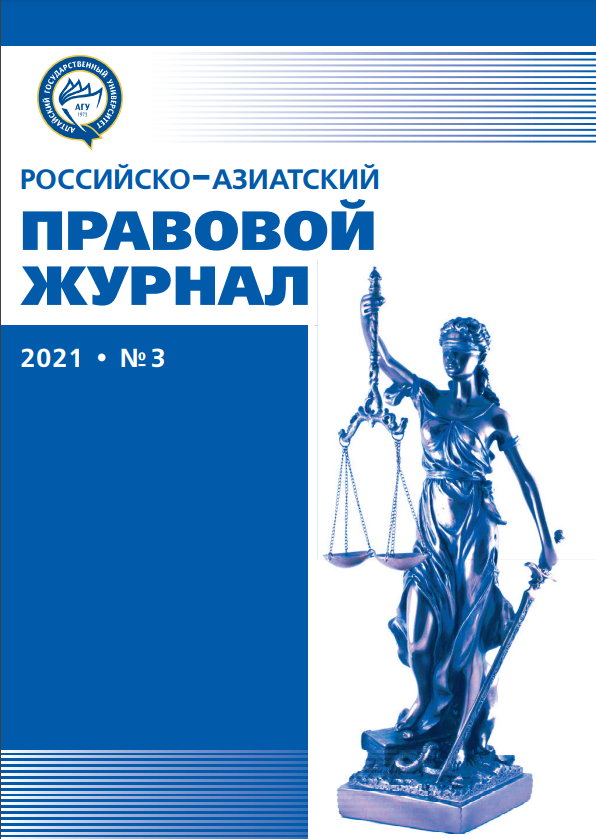REFERENCES TO THE TITLE OF THE TURKIC RULERS WHEN DESCRIBING THE HISTORY OF THE GHAZNAVIDS IN “TABA’I’ AL-HAYYAWAN” BY AL–MARWAZI
УДК 929.5:395 ББК 63.214–1
Abstract
Within the framework of this article, the focus is on the mention in al-Marwazi’s work “Taba’i’al-hayyawan” (“On the nature of animals”) of embassies from the Uighur and Khitan rulers to the court ofSultan Mahmud Ghaznаvi. This author also cites in his work the text of the messages that were sent to thissultan by both rulers. In the text of the letter of the Khitan emperor, the title “Qara-khan” is used in relationto Mahmud Ghaznavi, which could not but raise certain questions from researchers. In this article, we wouldlike to consider, first of all, the author’s explanation of the origin of such a title, as well as its application toMahmoud Ghaznаvi. Here it is necessary to analyze al-Marwazi’s instructions on the connection betweenthe title “Qara-khan” and African slaves in the Turkic nomadic environment, on which this author dwellsin detail. In addition, we will analyze the points of view of researchers, both on the origin of such title, andits existence in the political system of Desht-i Qipchak and neighboring regions. We hope that this articlewill be useful not only for researchers dealing with the history of the Ghaznavid dynasty, but also for a widerange of experts on the history of nomadic Turkic tribes, as well as the reflection of their history in medievalMuslim historiography.
Downloads
References
Бартольд В.В. Туркестан в эпоху монгольского нашествия. Ч. 1. СПб. : Тип. Имп. Акад. наук, 1898. 200 с.
Бартольд В.В. Сочинения. М. : Глав. ред. вост. лит-ры, 1963. Т. 1: Туркестан в эпоху монгольского нашествия. 1963. 760 с.
Гардизи Абу Са‘ид. Зайн ал-ахбар. Украшение известий. Раздел об истории Хорасана / пер. с персидского А.К. Арендса. Введение, комментарии и указатели Л.М. Епифановой. Ташкент ; Фан, 1991. 160 с.
Караев О. История караханидского каганата (X — начало XIII в.). Фрунзе : Илим, 1983. 301 с.
‘Aufi, Noor Uddin Mohammad. Muntakhib Jawami ul-Hikayaat wa Lawami ur-Rawayaat. Tehran : Banigah Ilmi-o-zaarat Firhang, 1324. 324 s.
Biran M. The Qara Khitai Empire in Eurasian History: Between China and the Islamic World. Cambridge: Cambridge University Press, 2005. 295 p.
Introduction to the Jawámi‘u’l-Ḥikáyát wa Lawámi‘u’r-Riwáyát of Sadídu’d-Dín Muḥammad al-’Awfí //By Muḥammad Niẓámu’d-Dín. London : Luzac and Co.,1929. 316 p.
Kitab Zainu’l-Akhbar. Composed by Abu Sa’id ‘Abdu’l-Ḥayy B. aḍ-Ḍahhak B. Maḥmud Gardizi about A. H. 440 / Edited by Muhammad Nazim. Berlin : Orientalischer Zeitschriftenverlag Iranschähr, 1928. 130 s.
Marvazi Sharaf al-Zaman Tahir. On China, the Turcs and India / Sharaf al-Zaman Tahir Marvazi // Arabic text with an English translation commentary by V. Minorsky. London : The Royal Asiatic Society, 1942.234 р.
Russian-Asian Law Journal is a golden publisher, as we allow self-archiving, but most importantly we are fully transparent about your rights.
Authors may present and discuss their findings ahead of publication: at scientific conferences, on preprint servers, in public databases, and in blogs, wikis, tweets, and other informal communication channels.
Russian-Asian Law Journal allows authors to deposit manuscripts (currently under review or those for intended submission) in non-commercial, pre-print servers such as ArXiv.
Authors who publish with this journal agree to the following terms:
- Authors retain copyright and grant the journal right of first publication with the work simultaneously licensed under a Creative Commons Attribution License that allows others to share the work with an acknowledgement of the work's authorship and initial publication in this journal.
- Authors are able to enter into separate, additional contractual arrangements for the non-exclusive distribution of the journal's published version of the work (e.g., post it to an institutional repository or publish it in a book), with an acknowledgement of its initial publication in this journal.
- Authors are permitted and encouraged to post their work online (e.g., in institutional repositories or on their website) prior to and during the submission process, as it can lead to productive exchanges, as well as earlier and greater citation of published work (See The Effect of Open Access).








